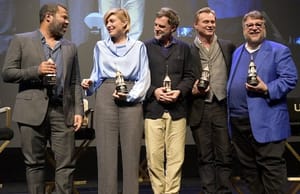
Christopher Nolan
On Making a War Film That Was Not Saving Private Ryan
I think anytime you’re working in such a familiar genre, you look to the touchstones, to the things that really succeeded in a particular way, and how they’re going to inform what you do. In the case of Saving Private Ryan, Steven lent me his own 35mm print, which is absolutely beautiful. That film has lost none of its visceral powerful. It’s really extraordinary but it has the wrong kind of intensity for telling this story. It clarified in my mind that I had to view this not so much as a war film but as a suspense thriller, with an unseen enemy. I wanted to maintain a specific type of tension, the language of suspense, wherein you can’t take your eyes off the screen. What Steven did so brilliantly in Saving Private Ryan was to use the language of horror. Instead of Saving Private Ryan, I mostly spoke to Steven about Jaws and shooting on the water, because I had never done that. His advice was, “Don’t.”
On the Relationship Between the Script Structure and the Sound in Dunkirk
The structure of the script was created to try and give a feeling of relentless tension. It was short, because I didn’t want to exhaust the audience. It ended up as just a 76-page script, with a structure based on a principle in the music world called the Shepard Tone. It’s essentially an audio illusion, whereby you can make it seem like tones are continuously rising. It’s always rising and never stops. We had used that in the music for The Prestige, and we had used it for the sound effects of the Batpod in The Dark Knight. It never downshifts. The engine is always going up. What I did with Dunkirk is I applied the mathematical principle of how that works to the script structure, so that one of the three storylines is always peaking, one after the other. With this, there’s a sense of a tumbling forward momentum to the narrative, never giving you a chance to relax or rest.
Share:


